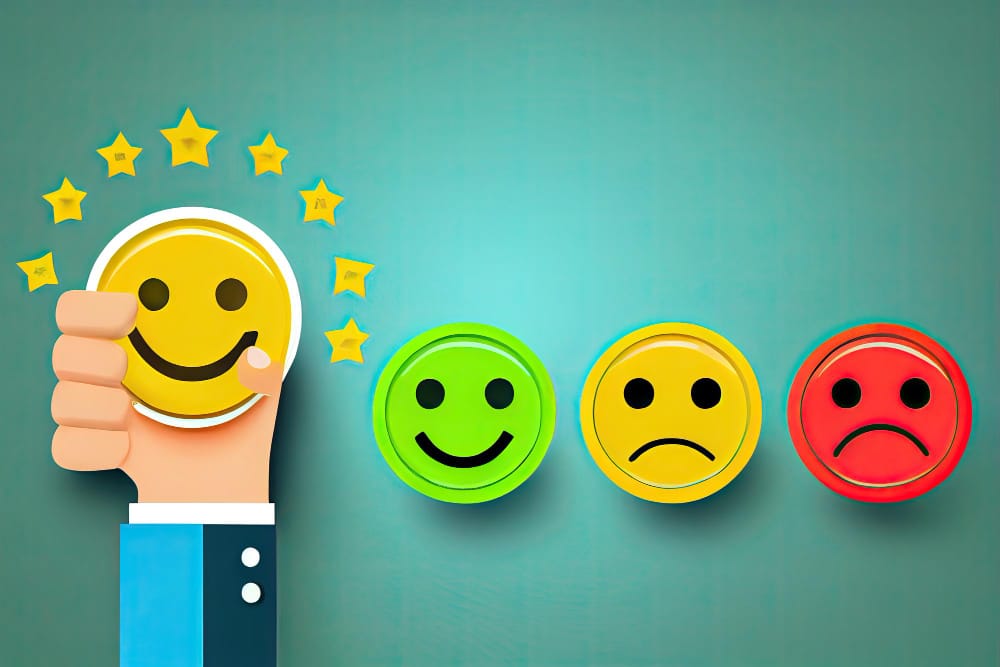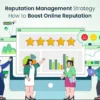Customer retention is as important as customer acquisition. In this fast-moving world, satisfied, loyal customers make repeat purchases and become brand advocates. This drives new business through referrals and positive word of mouth. One powerful tool for enhancing customer satisfaction and loyalty is collecting and utilizing customer feedback effectively. There are customer feedback apps, software, and survey apps to understand the customer prominently.
Turn feedback into lasting loyalty with piHappiness!❤️
Start building stronger customer relationships today
In this blog, we will explore five strategies for harnessing customer feedback to retain customers and build lasting relationships.
What is Customer Retention?
Customer retention refers to the strategies and efforts that businesses work on to keep their previous customers engaged. It focuses on customer satisfaction and loyalty to their products or services over an extended period.
It is the opposite of customer acquisition, which focuses on acquiring new customers. Customer retention recognizes the value of building and maintaining strong, ongoing relationships with those who have already chosen to do business with a company.
Key Aspects of Customer Retention Include:
Satisfaction: Ensuring that customers are happy with their purchases and overall experience with the company. Customers who are satisfied with a product or service are more inclined to remain loyal to it.
Loyalty: Encouraging customers to continue choosing the company’s products or services over those of competitors. Loyal consumers of your business are more likely to make repeat purchases. They also encourage others to make purchases or try your services, leading to a positive impact.
Repeat Business: Fostering an environment where customers return to make additional purchases or continue using services on an ongoing basis.
Long-Term Engagement: Building relationships with customers that extend beyond individual transactions, with the aim of creating brand advocates who not only remain customers but also promote the company to others.
Customer retention is vital for several reasons:
Cost-Effective: It is often more cost-effective to retain existing customers than to acquire new ones. A simple customer feedback software will do all the work and let you know the results of your organization. Acquiring new customers typically requires more resources and marketing expenses.
Stability: A base of loyal customers provides a stable revenue stream. No matter what, there will be a flow that you must not have to worry about. This will help in reducing revenue fluctuations and dependency on new customer acquisition.
Increased Revenue: Loyal consumers tend to spend more over time. This means your customers are engaging and have vital trust in your products to repeat the purchases or services. This ultimately contributes to higher lifetime customer value.
Referrals: Satisfied customers always refer friends and family to the company. This means spreading positive word of mouth, which builds revenue and brand awareness. It also leads to new customer acquisitions, resulting in your brand presence in a larger market.
Competitive Advantage: A strong customer retention strategy can give a company a competitive edge by fostering a positive reputation and customer trust. Using various customer survey apps, customer feedback software, etc., can do the work for you.
Customer retention strategies may involve various initiatives, such as personalized marketing, loyalty programs, excellent customer service, feedback collection, and continuous improvement of products or services based on customer feedback. Ultimately, the aim is to create a positive environment where customers feel valued, satisfied, and motivated to stay loyal to the brand.
Ways to Use Customer Feedback to Retain Customers:
Listen Actively and Empathetically
The first step in utilizing customer feedback to retain customers is actively listening to their opinions and concerns. Create channels for customers to express their thoughts, such as surveys, feedback forms, or even social media platforms. When customers share their experiences, it’s essential to respond empathetically, showing them that their input is valued and that their voices are heard. This will create a positive impact on themselves and on your brand.
Identify Pain Points and Address Them
Customer feedback often highlights pain points and areas where your business can improve. Analyze this feedback to identify recurring issues or concerns. Once identified, take swift action to address these pain points. Whether it’s improving a product feature, streamlining your website’s checkout process, etc., addressing customer concerns demonstrates your commitment to their satisfaction.
Personalize Customer Experiences
Leverage the information collected through customer feedback to personalize interactions. Use customer data to tailor marketing messages, recommend products or services, or even offer exclusive discounts. Personalization makes customers feel valued and understood, increasing their loyalty to your brand. You can make use of customer feedback apps also to understand your clients.
Communicate Changes and Improvements
When you are thinking to make changes based on customer feedback, it’s essential to communicate these improvements to your customers. Send out updates, newsletters, or social media posts to inform them about the positive changes you’ve made. This you can calculate by simply adapting customer feedback software, which will automatically hold each and every data of your client. This not only showcases your responsiveness but also reinforces your commitment to delivering a better experience.
Reward and Recognize Loyal Customers
Customer feedback can help you identify your most loyal customers. Create loyalty programs or reward systems to recognize and appreciate these customers. Exclusive discounts, early bird access to new products, or special promotions can all incentivize continued patronage. When customers feel valued and rewarded, they are more likely to stick with your brand.
How to calculate the Customer Retention Rate?
Customer retention rate is a metric that is used to measure the percentage of customers that a business retains over a specific period of time. Retain customers for your business by assessing and understanding customer satisfaction, loyalty, and the overall health of your business.
Let us calculate the customer retention rate:
- Start with the number of customers at the beginning of a specific period (usually a month or a year). Let’s call this “C1.”
- Determine the number of customers at the end of that period (after the same period, e.g., a month or a year). This will be “C2.”
- Calculate the number of customers acquired during the period. You can find this information in your records. Let’s call this “New Customers Acquired (N).”
Now, you can calculate the customer retention rate using the following formula.
Customer Retention Rate= [C2−N / C1] X 100
Here’s a step-by-step breakdown of the calculation:
- Subtract the no. of new customers acquired (N) during the period from the total number of customers at the end of the period (C2). This will give you the number of existing customers who were retained.
- Divide the result from Step 1 by the number of customers at the beginning of the period (C1).
- Multiply the fraction by 100 to express the customer retention rate as a percentage.
This metric is useful for tracking the health of your customer base and identifying trends in customer churn (customers lost) and retention over time. A higher customer retention rate indicates that you are doing well at retaining your existing customers, which can lead to increased consumer lifetime value and business growth.
Incorporating customer feedback into your customer retention strategy is a powerful way to create long-term relationships and enhance loyalty. By actively listening, addressing pain points, personalizing experiences, communicating improvements, and rewarding loyal customers, you can create a customer-centric approach that not only retains your current customers but also captivates new ones through positive reviews and recommendations. Remember, satisfied customers are not just repeat buyers – they are your brand’s best advocates and partners in long-term success.
Frequently Asked Questions
1. What is Customer Retention?
Customer retention refers to the strategies and efforts that businesses work on to keep their previous customers engaged.
2. How is customer retention different from customer acquisition?
Customer retention is about keeping existing customers engaged and loyal to your business. Customer acquisition focuses on acquiring new customers who haven’t interacted with your business before.
3. What are the key aspects of customer retention?
Key aspects of customer retention include satisfaction, loyalty, repeat business, and long-term engagement with customers.
4. What are some tools to collect customer feedback?
You can collect customer feedback using tools such as surveys, feedback forms, social media platforms, and customer feedback apps and software.
5. Why is it important to communicate changes based on customer feedback?
Communicating changes based on customer feedback not only showcases your responsiveness but also reinforces your commitment to delivering a better experience. It keeps customers informed and engaged.
6. What are the benefits of using customer feedback for retention?
Using customer feedback for retention can lead to improved customer satisfaction, increased loyalty, reduced churn, etc.








